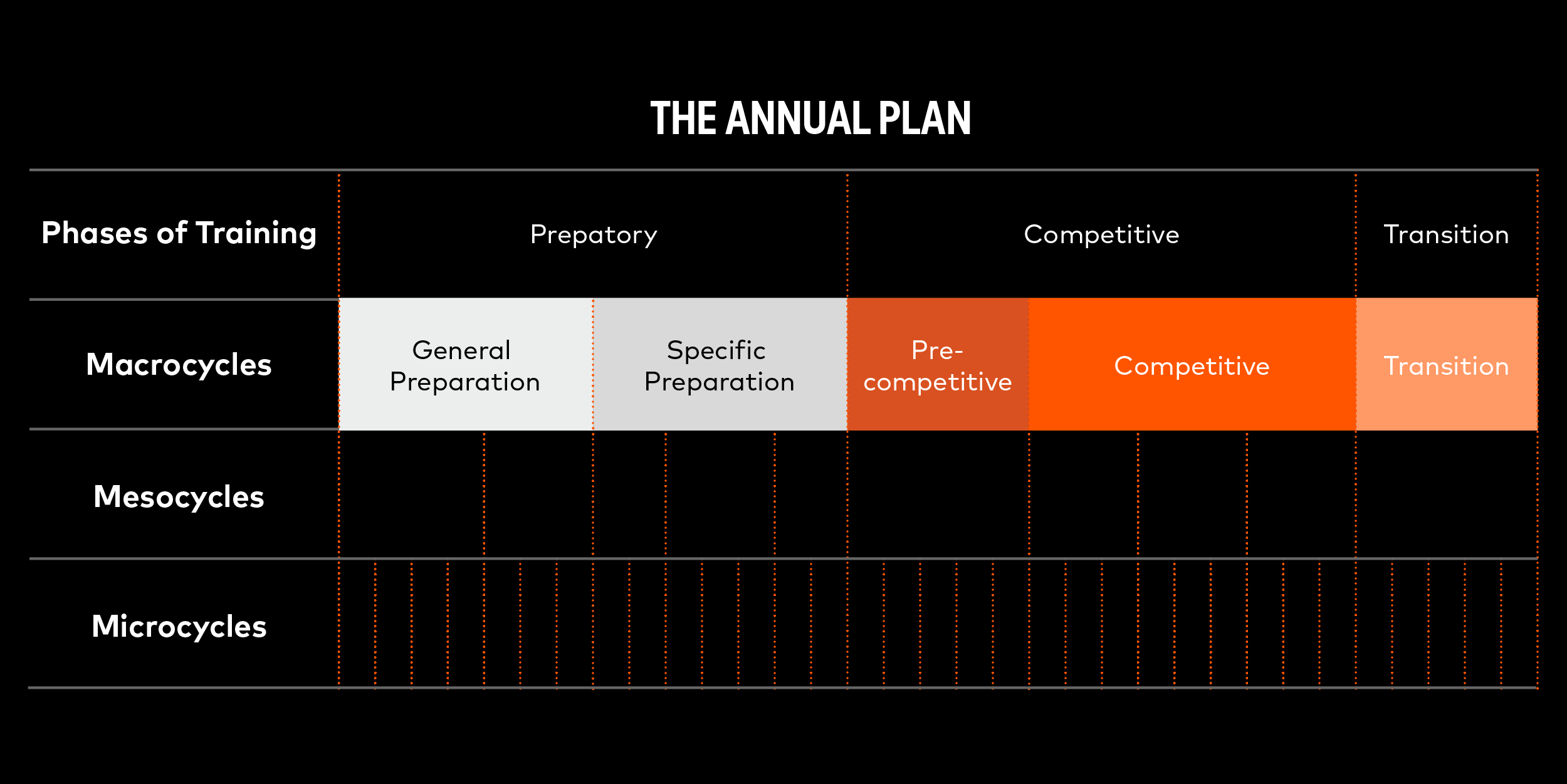Periodisation Training – Catapult Fundamentals:
Introducing you to the science behind our technology, the Catapult Fundamentals series explains sports science concepts and principles, and looks at the ways athlete monitoring systems can be used to improve player performance.
How To Structure Your Training Programmes with Periodisation Training
Although sports differ widely in terms of their physical, technical and tactical demands, the process by which training plans are constructed is underpinned by a set of common principles.
Collectively, this process is referred to as ‘periodisation’, the means by which training is systematically planned through division into smaller, more manageable segments. The purpose of this structured approach is to allow an athlete’s performance to peak during key periods within the season.
The basis for most sports is an annual plan, although many Olympic sports will work according to a quadrennial cycle. A well-structured, periodised plan will benefit the coach and the athlete via gains in efficiency (the volume of work needed to achieve predetermined goals) and effectiveness (more objectives being attained).
Periodisation Training Breakdown

The table above details a simple periodised annual plan which could be applied to any athlete or sport. This approach is relevant to many of the individual sports, but does not lend itself easily to many of the team sports where there is a requirement to ‘peak’ on several occasions over the course of a competitive season.
In the above example, the training year is broken down into three distinct phases; preparatory, competitive, and transition. Each phase has a clear generic purpose, and the duration of each will vary by sport.
Preparatory Phase: The foundation on which all future activity will be built by increasing base strength and endurance, ‘programming’ sport-specific movements, and enhancing gross and fine motor qualities.
Competitive Phase: Focused on optimising the condition of athletes for upcoming performances. The objectives of this phase include the optimisation of physical and psychological status, attention to physical weaknesses, and maintenance of general physical condition.
Transition Phase: An opportunity for the physical and psychological regeneration of the athlete. This phase is generally undertaken in an athlete’s ‘home’ environment, with individuals maintaining a certain level of activity to avoid a significant detraining effect.
Given the duration of the training phases, goals for each are broad and progress on a day-to-day and week-to-week level can be difficult to assess. To overcome this problem, phases are divided into smaller ‘sub-phases’ (macrocycles) which provide coaches and athletes with more clarity and detail regarding structure and goals. These sub-phases are then divided into a number of smaller periods (usually 2-6 weeks long) entitled mesocycles, with each mesocycle being constructed of a number of smaller units called microcycles.
Microcycle: The building block of an athlete’s training programme, providing the basis for the planning of a small number of sessions in the immediate future. The content of each microcycle determine the quality of the overall programme, so coaches must have a clear picture of the goals of each microcycle to ensure the appropriate metrics are effectively monitored.
Mesocycle: A mesocycle consists of a number of microcycles and enables coaches to engage in the advanced planning of training programmes. Generally speaking, mesocycles in the preparatory phase are longer (4-6 weeks) than during the competitive phase (2-4 weeks) to allow for a more sustained focus on specific physical qualities.
Macrocycle: The macrocycle can be thought of as the annual plan which can be split into clear training phases. Relatively little detail will go into the annual plan, but it allows coaches and athletes to get a generic overview of key dates and periods throughout the year.
When planning a training programme for your athletes, it’s important that you structure it according to these common principles. By doing this you will be better able to manage training load, recovery, and progression, thereby giving your athletes the best chance to succeed.
Interested in finding out how Catapult can help your team find its competitive edge? Click here to learn more about our range of athlete monitoring technologies.